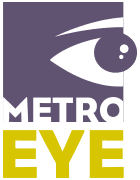Regular eye exams are important aspects of overall health maintenance in adults. Exams can detect problems like glaucoma, diabetic retinopathy, cataracts, and age-related macular degeneration (AMD). If adults aren’t having specific problems with their vision, they often don’t know when and how often eye exams should be scheduled.
The American Academy of Ophthalmology has specific suggestions for eye exam frequency:
- Between 20-29 years of age: At least one exam
- 30-39 years of age: At least two exams
- 40-64 years of age: Every 2-4 years
- 65 and over: Every 1-2 years
Before your eye exam, be sure to:
- * Note any vision problems when you call to make your appointment
- * Make a list of questions to take the doctor and a list of any drugs you are taking. Also be familiar with your family’s eye health history.
- * Bring your glasses and/or contact lenses. Sunglasses are also helpful for the trip home after pupil dilation.
About the eye exam:
- * Prior to the eye exam, the eye doctor or an office staff member will take your medical and vision history.
- * Plan for a half hour to hour for the exam.
Most exams include:
- An eye muscle movement tests which tests muscle strength and control.
- A cover test to see how well your eyes work together.
- An external exam and pupillary reaction test. Here your doctor observes how your pupils react to light and close objects.
- The visual acuity test is the standard test of letters on an eye chart.
- The retinoscopy is a check of the way light reflects from your eyes, and gives the doctor an idea of the correct lens prescription for you.
Be sure to contact your vision provider for your scheduled eye exam.

